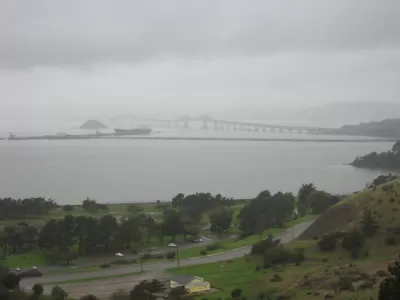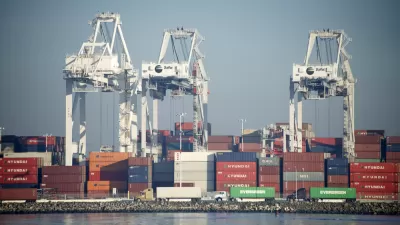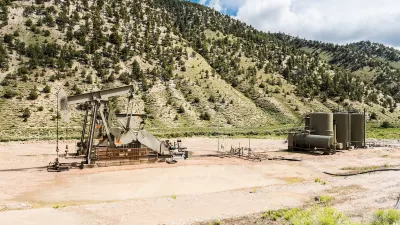Can freight trains and a scenic shoreline park along San Francisco Bay coexist, or are they incompatible uses? The East Bay Regional Park District voted to remove old rail tracks that BNSF Railway wants to reactivate. A local court may decide.

Cabanatuan provides the historical context of the rail line and the city of Richmond.
BNSF Railway’s predecessor, the Atchison, Topeka and Santa Fe Railway, brought Richmond to life in 1900 when it located its western terminus there. The railroad built a large rail yard near what became Point Richmond and a tunnel and tracks to Ferry Point on the shoreline, where passenger trains rolled onto barges to San Francisco and freight trains were taken to other bay ports.
When the park district bought the right of way in 1991 via eminent domain, the railroad was granted an easement to run trains to two industrial sites, both of which are now defunct.
What's not mentioned in any local or regional media coverage of the controversy is the vital role that rail plays in goods movement, not just from an economic but also an air quality perspective as well, even when the trains are being pulled by diesel-powered locomotives.
"[O]ne rail car can haul as much as four tractor-trailer trucks," according to a recent New York Times article (posted here) about a $100 million effort led by the New York City Economic Development Corporation to invest in local freight rail infrastructure so as to reduce truck traffic and emissions.
FULL STORY: Train tussle: Campaign fights plan for ‘wall of railcars’ on Richmond shoreline

Study: Maui’s Plan to Convert Vacation Rentals to Long-Term Housing Could Cause Nearly $1 Billion Economic Loss
The plan would reduce visitor accommodation by 25,% resulting in 1,900 jobs lost.

North Texas Transit Leaders Tout Benefits of TOD for Growing Region
At a summit focused on transit-oriented development, policymakers discussed how North Texas’ expanded light rail system can serve as a tool for economic growth.

Why Should We Subsidize Public Transportation?
Many public transit agencies face financial stress due to rising costs, declining fare revenue, and declining subsidies. Transit advocates must provide a strong business case for increasing public transit funding.

How to Make US Trains Faster
Changes to boarding platforms and a switch to electric trains could improve U.S. passenger rail service without the added cost of high-speed rail.

Columbia’s Revitalized ‘Loop’ Is a Hub for Local Entrepreneurs
A focus on small businesses is helping a commercial corridor in Columbia, Missouri thrive.

Invasive Insect Threatens Minnesota’s Ash Forests
The Emerald Ash Borer is a rapidly spreading invasive pest threatening Minnesota’s ash trees, and homeowners are encouraged to plant diverse replacement species, avoid moving ash firewood, and monitor for signs of infestation.
Urban Design for Planners 1: Software Tools
This six-course series explores essential urban design concepts using open source software and equips planners with the tools they need to participate fully in the urban design process.
Planning for Universal Design
Learn the tools for implementing Universal Design in planning regulations.
City of Santa Clarita
Ascent Environmental
Institute for Housing and Urban Development Studies (IHS)
City of Grandview
Harvard GSD Executive Education
Toledo-Lucas County Plan Commissions
Salt Lake City
NYU Wagner Graduate School of Public Service





























